Games in Context
The historic development of the video games industry
1950's - 1970's
The history of video games began in the 1950s and 1960s as computer scientists began designing simple games and simulations on minicomputers and mainframes. The Magnavox Odyssey is the first commercial home video game console. It was capable of displaying three square dots and one line of varying height on the screen in monochrome black and white, with differing behaviour for the dots depending on the game played. It was an inspiration for Atari's successful 1972 Pong arcade game.
By mid-1970’s the first cartridge-based home consoles arrived, including the Atari Video Computer System (VCS). At the same time Arcade video games were growing fast, including Space Invaders, Pong and Pac-Man, and the home console market was flourishing. In the 1980’s the gaming industry plummeted, mainly in the US as there were too many games that flooded the market, poor cloned games and competition from inexpensive personal computers and new types of games being developed for them. The crash prompted Japan’s own gaming industry to take the lead and Nintendo released its Nintendo Entertainment System in the US in 1985 helping to steady and grow the market once more.
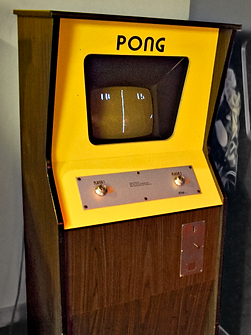
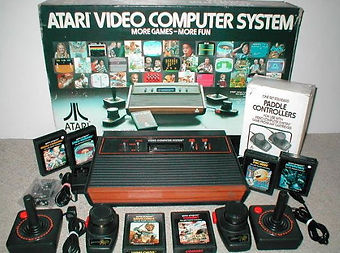
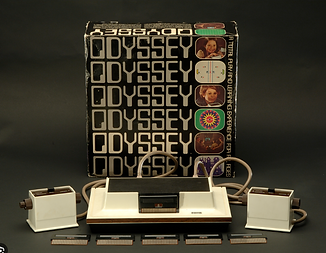
1980's - 1990's
In the late 1980’s to early 1990’s video games were driven by improvements and standardization in PC’s, and Nintendo and Sega (who had released their own console) fought to be the best and own the highest market share of gamers.
The first handheld games started to appear in the early 1990’s led by Nintendo’s handheld Gameboy.
Two significant technological changes also happened - the introduction of CD-ROMs and real-time 3D graphic rendering which was as a result of advancements in microprocessor technology. Both elements were easily implemented into personal computers, creating a market for Graphics Cards, including Sony's fledgling PlayStation console line, pushing Sega out of the console hardware market while diminishing Nintendo's role.
By the late 1990s, the Internet was widespread and, in many homes, and video games began incorporating online elements.
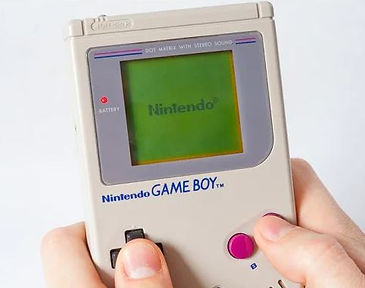
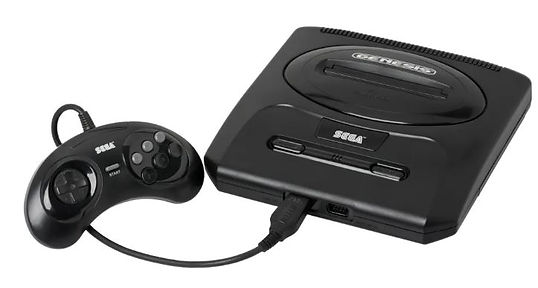
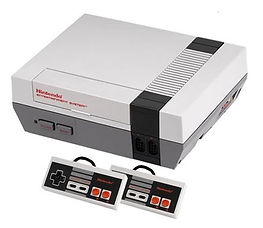

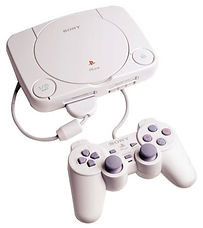
2000's - 2010's
Microsoft launched Xbox consoles early 2000 out of fear that Sony's PlayStation, which was positioned as a gaming console and entertainment system, would overtake personal computers. While Sony and Microsoft continued to develop their consoles with comparable top-end features, Nintendo went for innovative gameplay developing the Wii with motion-sensing controls, which was aimed to all the family and brought Nintendo back into the front of gaming; Nintendo followed this with the launch of the Nintendo Switch in the years to follow which has been a huge success.
From 2000’s to 2010’s, other technologies were also advancing at a fast rate, smartphones were becoming smaller and more powerful, software and graphics were improving, smartphone contracts with data were becoming more affordable for the everyday user, and gradually mobile gaming on smartphones and tablets replaced portable consoles. Casual gaming grew as a market segment, and the number of gamers from China and other regions not previously associated with the industry increased.
The first cloud gaming services emerged in 2009. These services allowed players to play games where the processing power was performed on a computer system at a hosted location. This eliminated the need for a costly console or dedicated gaming computer for players. Cloud gaming became more refined in the 2010s as total network capacity around the world increased with higher bandwidths made available to consumers, in addition to new technologies to try to overcome the latency issue.
Around 2010, multiplatform started to become a thing, it became technically feasible to allow for cross-platform play between different platforms. However it was contested heavily by the likes of Sony, Microsoft and Nintendo who had concerns and wanted to maintain a family friendly environment for their online services.
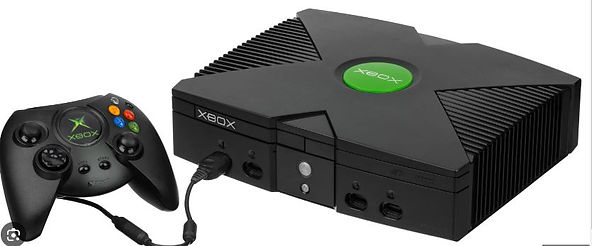


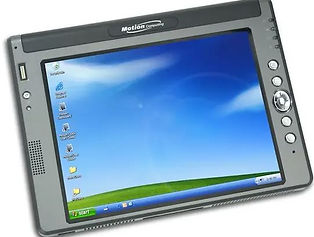


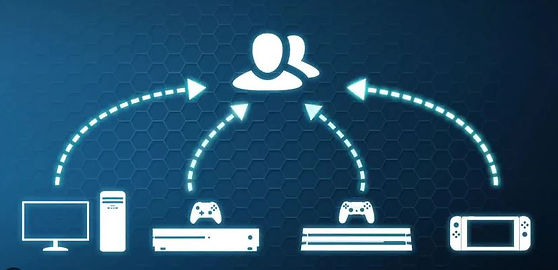
2010 - Present
New revenue models for video games started to appear in the early 2010’s as publishers looked for ways to gain additional revenue for games beyond the first sale of the game. Creating ways to earn in game currency allowing you to exchange for different content or upgrades plus allowing real life money to make purchases including loot boxes and when opened would contain a variety of items, randomly selected. However, since real-world money could be used to buy them, this attracted the attention of international governments and policy leaders who were concerned that loot boxes were too close to gambling.
As Virtual Reality (VR) technology has advanced over the last 10 years, there have been several attempts to make VR Gaming headsets mainstream, however the due to high cost and ugly designs, plus not so many games being available its still in my opinion just a nice to have device. There are options available from mainstream brands such as HTC, PlayStation and even Facebook bought the company who created the Oculus Rift VR headset.
Having used a VR headset I can see the attraction and really enjoyed the experience, but to make it so everyone “must” have one, the price should be reduced, and all the new games that are launched should have some form of Virtual Experience.
Augmented Reality (AR) looks interesting and I wonder how far this will get developed for different industries, not just gaming. When Pokémon Go was released in 2016, it blended location-based games with augmented reality, and the genre took off. Players would try to capture a virtual Pokémon using augmented reality by using their mobile smartphone to direct them to its location.
Fortnite Battle Royale by Epic Games, launched in 2017, was a key factor in the growth of cross-platform play. In the first few months after its introduction, Fortnite quickly acquired popularity, and Epic was able to demonstrate how simple it was to incorporate cross-platform play between the Xbox, Windows, and mobile platforms.
Into the 2020’s, NVidia and AMD introduced graphics cards with hardware support for real-time ray tracing displaying highly detailed textures, allowing for photorealism in rendered video game scenes at high resolutions and high frame rates. This can be found in the PlayStation 5 and Xbox X/Series.
The concept of the Metaverse has started to grow in popularity. The concept of a metaverse is based on using more advanced technology like virtual and augmented reality to create immersive worlds that not only can be used for social and entertainment functions but as well as for personal and business purposes.
I am not completely understanding the Metaverse yet and It will be interesting to see how this takes off and how they make it become easier to understand and use for the everyday gamer.
Video games consoles launched by year
I decided to find out when exactly each console since 1970 had launched as this would then help me when I start to make my poster as I want to add the year the console, plus images for each.
1972 - Magnavox Odyssey
The Odyssey was manufactured by Magnavox and released in North America in September of 1972. It stands as the very first home video game console. The system was developed by Ralph Baer, a German-American engineer who created the ping-pong-style game play that the Odyssey offered.
1977 – Atari VCS 2600
The Atari 2600 is a video game console released in September 1977 by Atari Inc. It is credited with popularizing the use of microprocessor-based hardware and ROM cartridges containing game code, instead of having non-microprocessor dedicated hardware with all games built in.
1979 – Intellivision
The Intellivision is a video game console released by Mattel in 1979. Development of the console began in 1978, less than a year after the introduction of its main competitor, the Atari 2600. Over 3 million Intellivision units were sold and a total of 125 games were released for the console
1982 – ColecoVision
ColecoVision is a second-generation home video game console developed by Coleco and launched in North America in August 1982. It was released a year later in Europe by CBS Electronics as the CBS ColecoVision.
The console offered a closer experience to more powerful arcade video games compared to competitors such as the Atari 2600 and Intellivision. The initial catalogue of twelve games on ROM cartridge included the first home version of Nintendo's Donkey Kong as the pack-in game. Approximately 136 games were published between 1982 and 1984.
1985 – Nintendo Entertainment System
The Nintendo console, or Nintendo Entertainment System (NES), was released as the Famicom in Japan on July 15, 1983. The Famicom offered the ability to play popular arcade games such as Donkey Kong on a home television set and was extremely well received.
1989 – Sega Genesis
The Genesis was Sega's third console and the successor to the Master System. Sega released it in 1988 in Japan as the Mega Drive, and in 1989 in North America as the Genesis. In 1990, it was distributed as the Mega Drive by Virgin Mastertronic in Europe, Ozisoft in Australasia, and Tec Toy in Brazil.
1990 – Super Nintendo Entertainment System
The Super Nintendo Entertainment System (SNES), commonly shortened to Super NES or Super Nintendo, is a 16-bit home video game console developed by Nintendo that was released in 1990 in Japan and South Korea,1991 in North America, 1992 in Europe.
1993 – Mega Drive II (Genesis)
The Mega Drive II was a redesign in 1993 to be a cut cost version, both in manufacture and retail. It was much smaller and square in shape compared to the original. It did not have the headphone jack, volume control or RF TV output.
1995 – PlayStation
The PlayStation (abbreviated as PS, commonly known as the PS1/PS one or its codename PSX) is a home video game console developed and marketed by Sony Computer Entertainment. It was released in Japan on 3 December 1994, in North America on 9 September 1995, in Europe on 29 September 1995, and in Australia on 15 November 1995. As a fifth-generation console, the PlayStation primarily competed with the Nintendo 64 and the Sega Saturn. The PlayStation signalled Sony's rise to power in the video game industry. It received acclaim and sold strongly; in less than a decade, it became the first computer entertainment platform to ship over 100 million units.
1996 – Nintendo 64
The Nintendo 64 (N64) is a home video game console developed by Nintendo. The successor to the Super Nintendo Entertainment System, it was released in Japan and North America in 1996, in Japan, and Europe and Australia in 1997. It was the last major home console to use cartridges as its primary storage format until the Nintendo Switch in 2017. It competed primarily with the Sony PlayStation and the Sega Saturn.
2000 – PlayStation 2
Announced in 1999, Sony began developing the console after the immense success of its predecessor. As a sixth-generation console, it competed with Nintendo's GameCube, and Microsoft's Xbox. It is the best-selling video game console of all time, having sold over 155 million units worldwide. A total of over 4,000 game titles were released worldwide, with over 1.5 billion copies sold.
2001 – Xbox
The Xbox is a home video game console and the first instalment in the Xbox series of video game consoles manufactured by Microsoft. It is classified as a sixth-generation console, competing with Sony's PlayStation 2 and Nintendo's GameCube. It was also the first major console produced by an American company since the release of the Atari Jaguar in 1993. The Xbox had a record-breaking launch in North America, selling 1.5 million units before the end of 2001, aided by the popularity of one of the system's launch titles, Halo: Combat Evolved, which sold a million units by April 2002.
2005 – Xbox 360
The Xbox 360 is a home video game console developed by Microsoft. As the successor to the original Xbox, it is the second console in the Xbox series. It competed with Sony's PlayStation 3 and Nintendo's Wii as part of the seventh generation of video game consoles. The Xbox 360 features an online service, Xbox Live, which was expanded from its previous iteration on the original Xbox and received regular updates during the console's lifetime. Available in free and subscription-based varieties, Xbox Live allows users to: play games online; download games (through Xbox Live Arcade) and game demos; purchase and stream music, television programs, and films through the Xbox Music and Xbox Video portals; and access third-party content services through media streaming applications.
2006 – Nintendo Wii
The Wii[g] (/wiː/ WEE) is a home video game console developed and marketed by Nintendo. It was Nintendo's fifth major home game console, following the GameCube and is a seventh-generation console alongside Microsoft's Xbox 360 and Sony's PlayStation 3. In developing the Wii, Nintendo president Satoru Iwata directed the company to avoid competing with Microsoft and Sony on computational graphics and power and instead to target a broader demographic of players through novel gameplay. The Wii was Nintendo's first home console to directly support Internet connectivity, supporting both online games and for digital distribution of games and media applications through the Wii Shop Channel. The Wii also supports wireless connectivity with the Nintendo DS handheld console for selected games.
2006 – PlayStation 3
The PlayStation 3 (PS3) is a home video game console developed by Sony Interactive Entertainment. The successor to the PlayStation 2, it is part of the PlayStation brand of consoles. The PlayStation 3 competed primarily against Microsoft's Xbox 360 and Nintendo's Wii as part of the seventh generation of video game consoles. It was the first console to use Blu-ray Disk technology as its primary storage medium. The console was the first PlayStation to integrate social gaming services, including the PlayStation Network, as well as the first to be controllable from a handheld console, through its remote connectivity with PlayStation Portable and PlayStation Vita.
2013 – Xbox One
The Xbox One is a home video game console developed by Microsoft. Microsoft marketed the device as an "all-in-one entertainment system", hence the name "Xbox One". An eighth-generation console, it competed against Sony's PlayStation 4 and Nintendo's Wii U and later the Switch. The console places an increased emphasis on cloud computing, as well as social networking features and the ability to record and share video clips or screenshots from gameplay or livestream directly to streaming services such as Mixer and Twitch.
2013 – PlayStation 4
The PlayStation 4 (PS4) is a home video game console developed by Sony Interactive Entertainment. A console of the eighth generation, it competes with Microsoft's Xbox One and Nintendo's Wii U and Switch. The PlayStation 4 places an increased emphasis on social interaction and integration with other devices and services, including the ability to play games off-console on PlayStation Vita and other supported devices ("Remote Play"), the ability to stream gameplay online or to friends, with them controlling gameplay remotely ("Share Play").
2016 – Xbox One S
The Xbox One S is a video game console developed and marketed by Microsoft that was released globally on August 2, 2016. The console was the first revision of the Xbox One, with the biggest differences being a slimmer design, support for 4K Ultra HD video streaming and HDR Gaming support. The console was released at a much more affordable price when compared to the standard Xbox One. The console was made available in 500GB, 1TB, 2TB variants.
2016 – PlayStation 4 Pro
On June 10, 2016, Sony confirmed that a hardware revision of the PlayStation 4, rumored to be codenamed "Neo", was under development. The new revision is a higher-end model that is meant to support gameplay in 4K. The new model will be sold alongside the existing model, and all existing software will be compatible between the two models.
2017 – Xbox One X
Xbox One X features upgraded hardware, designed primarily to render games at 4K resolution and to provide performance improvements for existing games;[344] they can be displayed at full resolution on 4K displays. Xbox One X is compatible with all existing Xbox One software and accessories, including the Xbox and Xbox 360 games that have been made backward compatible. Xbox One X has been characterized as a competitor to Sony's PlayStation 4 Pro, a hardware update of the PlayStation 4 released in late 2016 that similarly focuses on 4K gaming and improved virtual reality performance, although Phil Spencer relegated the PlayStation 4 Pro as competition to Xbox One S instead.
2017 – Nintendo Switch
Its wireless Joy-Con controllers, with standard buttons and directional analog sticks for user input, motion sensing, and tactile feedback, can attach to both sides of the console to support handheld-style play. They can also connect to a grip accessory to provide a traditional home console gamepad form or be used individually in the hand like the Wii Remote and Nunchuk, supporting local multiplayer modes. The Nintendo Switch's software supports online gaming through Internet connectivity, as well as local wireless ad hoc connectivity with other consoles. Nintendo Switch games and software are available on both physical flash-based ROM cartridges and digital distribution via Nintendo eShop; the system has no region lockout. A handheld-focused revision of the system, called the Nintendo Switch Lite, was released on September 20, 2019. A revised higher-end version of the original system, featuring an OLED screen, was released on October 8, 2021.
2019 - Xbox One S Digital
In 2019 an all-digital model of the Xbox One S was released; the Xbox One S All-Digital Edition is almost identical to the console it is based off with the only difference being the missing disc drive.
2020 – PlayStation 5
In late 2020, the Xbox One S was discontinued, along with all other Xbox One models, in preparation for the release of the Xbox Series X and Xbox Series S.
Detroit: Become Human - Video Game
I have thought about one of my favourite games which is the Action- Adventure Sci-Fi game Detroit: Become Human, it’s built around an open, near-future interactive story that sees players take on the role of three androids who rebel in a world where robots are near-slaves but are persecuted by much of the general population.
Launched in 2018, it was at a stage where AI technology was advancing and the game, although based on a Sci-Fi concept, was not only a view on how the world could look if it continues to embrace technology but also it raised questions around divisions in society including items such as racism, social class, immigration. So it certainly enabled the conversation about a divided society and how technology is affecting the way we relate to each other.
From the onset, the player knows the goal of the game. The reason for playing however is in the variety, depth of the visual effects, and storytelling. There are 3 major storylines, some intersecting, and a variety of choices as well as endings. There’s some adventure, some action, but most of it is about the drama. What’s important is the game gets you thinking about what it means to be human, have emotions, thoughts, and individuality which plays on many themes throughout history in the hopes of building a better future.
This game sits within the time when technology was advancing fast not just in the gaming industry but in multiple industries. AI/VR/AR/Robotics are all growing and becoming more powerful and being able to construct a sci-fi game with amazing visual movie-type effects, and storytelling, combined with real-world issues meant this game had everything giving the player a choice and free will in all decisions right or wrong.
Thanks to the motion capture technology employed, Detroit: Become Human looks stunning in both pictures and gameplay, and the detail in the character's face is great. The fact that there were different outcomes depending on whether I had made the right or wrong choices during the game made this game fun to play.

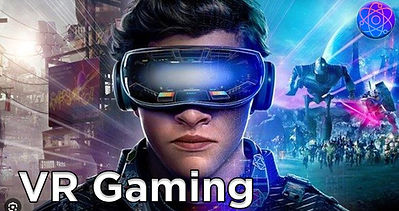

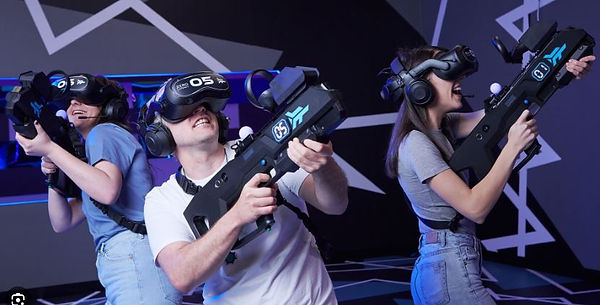
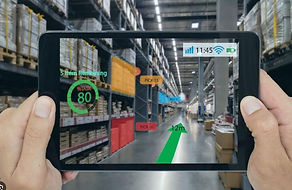

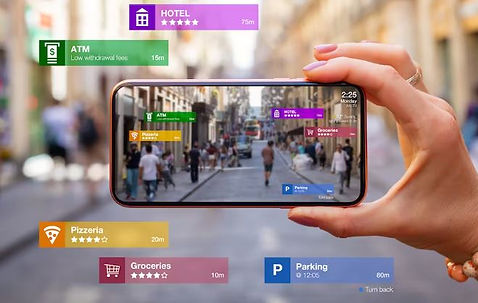


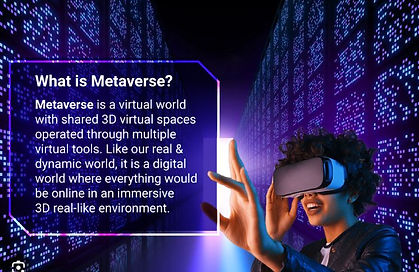



Technological innovations within the games industry
The video game industry is a fast-paced tech industry. It’s not alone, if you think about technology as a whole, TV’s, smartphones, tablets, cars being electric, robotics, basically everything is advancing becoming smarter, slimmer and more powerful.
Here are the most recent technological innovations within the games industry:
Augmented Reality
The game quickly became a global phenomenon, with millions of people playing it on their smartphones with the release of Pokémon Go. The success of the first AR mobile games has led to a renewed interest in AR technology from the gaming industry. Several major game companies, including Nintendo, Microsoft, and Sony, are investing heavily in AR technology. It will be interesting to see how advanced AR becomes in gaming, what I like about AR is the fact you don’t need to purchase a headset so is more accessible to all gamers.
Virtual Reality - Virtual Reality is full-blown immersion gaming.
After several attempts in the past it seems VR is here to stay. It seems its not just gaming, it seems medical and science fields are experiencing in using VR for training. The possibilities seem endless, it can take you anywhere but on the flip side you may have space limitations when using it so may bump into physical objects so not sure how you would get around that from a gamer using at home. Soon, cloud VR could become a reality – further reducing the size of headsets. 2022 might even see the release of Apple's long-rumoured VR headset.
Cloud Gaming
Microsoft, Sony, Google, Nvidia, Tencent, and Amazon are some of the major names in the video game industry that now make their titles available through cloud-based subscription services. There’s no need for gamers to continuously buy and upgrade expensive and power-hungry hardware.
Players only require a fast internet connection to access any of the games available online.
According to Fortune Business Insights the Cloud gaming market is going to be worth $56.7Billion in 2027, whereas now its $12.53Billion so massive change.
Cross Platform Gaming
Cross-platform gaming is a further emerging trend that will likely influence how the gaming industry develops in 2022. In the past, it was difficult to make games that could be played on a variety of platforms and consoles.
The high expenses of game development and the lack of technology were the primary causes of games being restricted to a single platform and unable to be played on other devices. In contrast, game makers are experimenting more with game regulations in 2022 in an effort to make cross-platform gaming a reality.
Face Recognition
Thanks to technology like facial recognition and 3D scanning, players are now able to enjoy a small number of video games with avatars that closely resemble them. Face recognition technology has promising potential in the gaming sector, and various companies such as Intel are beginning to take note of this.
4K gaming
The first 4K displays arrived in 2013 giving players the chance to take their gaming to a whole new level. Sony and Microsoft joined in as well, launching updated versions of its PlayStation 5 and Xbox Series X that support 4K and furthermore, 120 frames per second gameplay. You’ll also need a high spec Compatible PC with Graphics to match!
Voice Recognition – A voice-controlled game allows you to command your character and interact with others through speech. lowers the learning curve for beginners, seeing as less importance is placed on figuring out controls. Amazon announced the launch of Alexa Game Control, allowing gamers to play games by using their voice. “Dead Island 2” will be the first game to be compatible with Alexa Game Control, with other games to follow. Gamers can yell at zombies now!
Mobile Gaming
Mobile gaming refers to playing video games on mobile devices like smartphones and tablets. The most important aspects of this sector are the processors and displays, connectivity via telecom networks and cloud services. Mobile gaming is already bigger than the console and PC gaming markets combined, contributing nearly 57% of global video games revenue in 2021.
More gamers will shift to mobile gaming, especially multiplayer games, as 5G networks become more widely available. In turn, this will accelerate the development of mobile esports.
Gesture Control
Motion control gaming is now standard on consoles from Microsoft, Sony & Nintendo. Microsoft was one of the first to deliver the technology at the mainstream scale with its Kinect for Xbox 360, released in November 2010. Other technology companies have launched their own products like Google, who provided gesture interactions on its mobile phones and smart speakers.



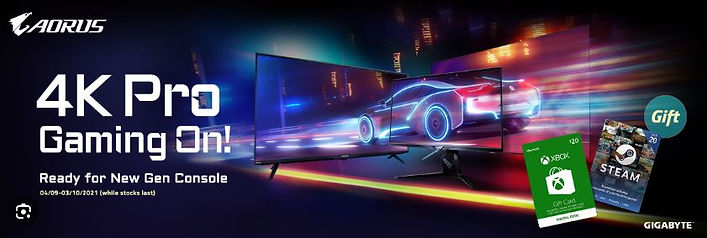
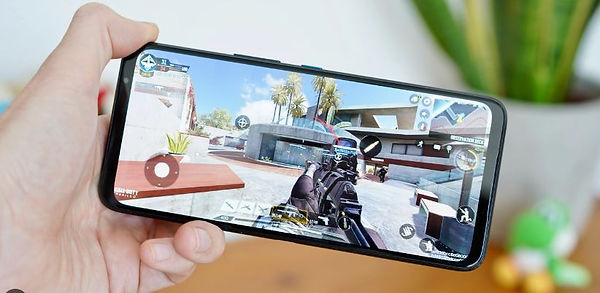


Video game industry’s position within the broader creative and cultural sectors
In terms of the video game industry’s position within the broader creative and cultural sectors, the gaming sector is huge. It is bigger than the entire movie and music industry, and it is expanding. There are more than two billion gamers around the globe, even though it doesn't receive the same media exposure as the film and music industries. That is 26% of all people on the planet.
Merchandising is a huge business, with the most popular video games being made into films like Assassin’s Creed, Sonic the Hedgehog and The Last of Us which will be a Sky TV series this month.
The demographics of the market are expanding, which is another development in the video game sector. People are playing games sooner and later in life, and the gender split is almost equal.
When reading adventure books or watching action films, you will only get a view of the plot which is set. Games offer a different dimension to such stories as it gives you control over characters and items. It creates a deeper interaction with the plot through the gameplay.
The development of technology and the creation of the internet have greatly benefited the gaming business. Virtually playing video games online is a possibility for players everywhere. People you would never meet in real life are introduced to you through the gaming community.
A gaming platform allows people of different ages and religious affiliations to interact. Despite the fact that they may speak different languages, the two parties may work together and push one other in productive ways.
How society, culture, technology, and economy inform video game development
From big budget films to crowdfunded indie games, successful developers follow trends to learn what audiences are looking for and anticipate. For example, if you were to think about creating a new video game today you would want to consider multiple aspects such as industry trends like cloud gaming and streaming, digital distribution such as Steam, free-to-play with monetization opportunities, increased diversity in the people that are now playing games, mobile gaming, and next-gen consoles with state-of-the-art graphics and easy to access games.
Video games are always changing as a result of technological developments like 3D graphics, VR, and AI. In the future, players will see increasingly realistic, more immersive simulations on screens as developers roll out new advancements, and they will be able to interact with others in new ways. The future of video games will be influenced by our desire to deliver mind-blowing experiences and increase our opportunities for social interaction.
Video games, in contrast to most other forms of entertainment, can bring together people from all walks of life and religious perspectives. Today, video games serve as the setting for this real-time, group play that opens minds and creates new communities by bringing strangers together.
Games are capable of more than just establishing an emotional bond with us. Currently, 63% of adult gamers play with others, frequently in teams that gather both offline and online. These strangers quickly learn how to cooperate to accomplish a shared objective after being brought together by servers and matchmaking algorithms. This one mechanic has led to an explosion in the popularity of esports, creating new social elements and opportunities to participate in video game culture.
The way that culture, technology, and society inform the design of a specific game
Detroit: Become Human Director David Cage quoted to Gamesindustry.biz that “Detroit: Become Human impressed with its technical beauty and embrace of something audiences have craved for years: a feeling that their choices matter”. Clearly feedback from society and gamers had talked about the need to create a game where you player can decide the fate of the game based on their own decisions and actions.
Almost every action has a consequence in this game and it’s the choice of the player. A hostage situation might go bad if you make the wrong moves as Connor, while the fate of many androids rests on Markus' decisions. David also spoke about the decision to use Detroit as the city for the game. In an interview with Gamespot, he described it as a “city trying to be reborn again” after going through hard times. The developers travelled to Detroit to take extensive photographs, meet the people who live there, and visit abandoned buildings.
Cage also spoke about the city's history with racial issues, a concept which is mirrored in the relationships between certain humans and androids in the game. With technology advancing quickly with advanced game engines, incredible graphic graphics and at a time where social media advertising getting the game to reach every corner of the world made this game one of the stand out games of its kind when released.
Become Human is a great game and is one of the best interactive adventure games I've ever played, even now.
Conclusion
Its been really interesting to understand how the video games industry has changed over the decades. Technology is a real driver to bringing games more lifelike with amazing graphics and movie-like experiences today and if you compare the first versions of some games versus the latest today you can really see how the graphics and mechanics, the gameplay have advanced. It will be really interesting to see how VR and AR continue to grow in gaming, its there today but it's not in everyone's home because of a few reasons, one being the cost of the headset, possibly some gamers don't like the designs, then there's the space aspect as you need this to ensure you're not knocking into stuff. For me, Cloud and Cross-platform gaming has really opened up the gaming industry over the recent years. It's so much easier to meet different people from all over the world, create new friends from all sorts of backgrounds, and feel a real part of a community all from your own home. For the future, everyone is talking about the Metaverse or NFT, but so far it's not clear what these technologies will end up doing and how they will impact the gaming industry - but overall its really exciting.
Research Sources and Bibliography
https://www.en.wikipedia.org. History of Video Games. [Online]. Available at: https://en.wikipedia.org/wiki/History_of_video_games [Accessed 9 Nov 2022].
https://www.en.wikipedia.org. Magnavox Odyssey. [Online]. Available at: https://en.wikipedia.org/wiki/Magnavox_Odyssey [Accessed 9 Nov 2022].
https://www.gamesindustry.biz. Detroit: Become Human: Critical Consensus. [Online]. Available at: https://www.gamesindustry.biz/detroit-become-human-critical-consensus [Accessed 12 Nov 2022].
https://www.gamespot.com. Detroit: Become Human Director on Being Respectful to Real Cities in Games. [Online]. Available at: https://www.gamespot.com/articles/detroit-become-human-director-on-being-respectful-/1100-6440946/ [Accessed 14 Nov 2022].
https://www.marketbusinesswire.com. Latest Technology Trends Altering the Digital Gaming Industry in 2022. [Online]. Available at: https://marketbusinessnews.com/latest-technology-trends-altering-the-digital-gaming-industry-in-2022/310331/ [Accessed 17 Nov 2022].
https://www.wepc.com. 1080p Vs 4K gaming: is gaming at 4K worth it? [Online]. Available at: https://www.wepc.com/gaming-monitor/compare/1080p-vs-4k-gaming/ [Accessed 17 Nov 2022].
https://www.globaldata.com. Gaming Market Analysis by Region, Platform (Smartphone, Console, PC, Tablet, Handheld Controllers, Head-mounted Displays), Gamer Type and Segment Forecast, 2022-2030 [Online]. Available at: https://www.globaldata.com/store/report/gaming-market-analysis/?_gl=1*ugd1v5*_ga*ODQ0MzMwMjU4LjE2NzMxOTkwNzY.*_ga_JYSQW15TQG*MTY3MzE5OTA3Ni4xLjAuMTY3MzE5OTA3Ni42MC4wLjA. [Accessed 17 Nov 2022].
https://www.techcrunch.com. Amazon’s adding voice-powered gaming to big name games with Alexa Game Control. Available at: https://techcrunch.com/2022/08/24/amazons-adding-voice-powered-gaming-to-big-name-games-with-alexa-game-control/ [Accessed 18 Nov 2022].